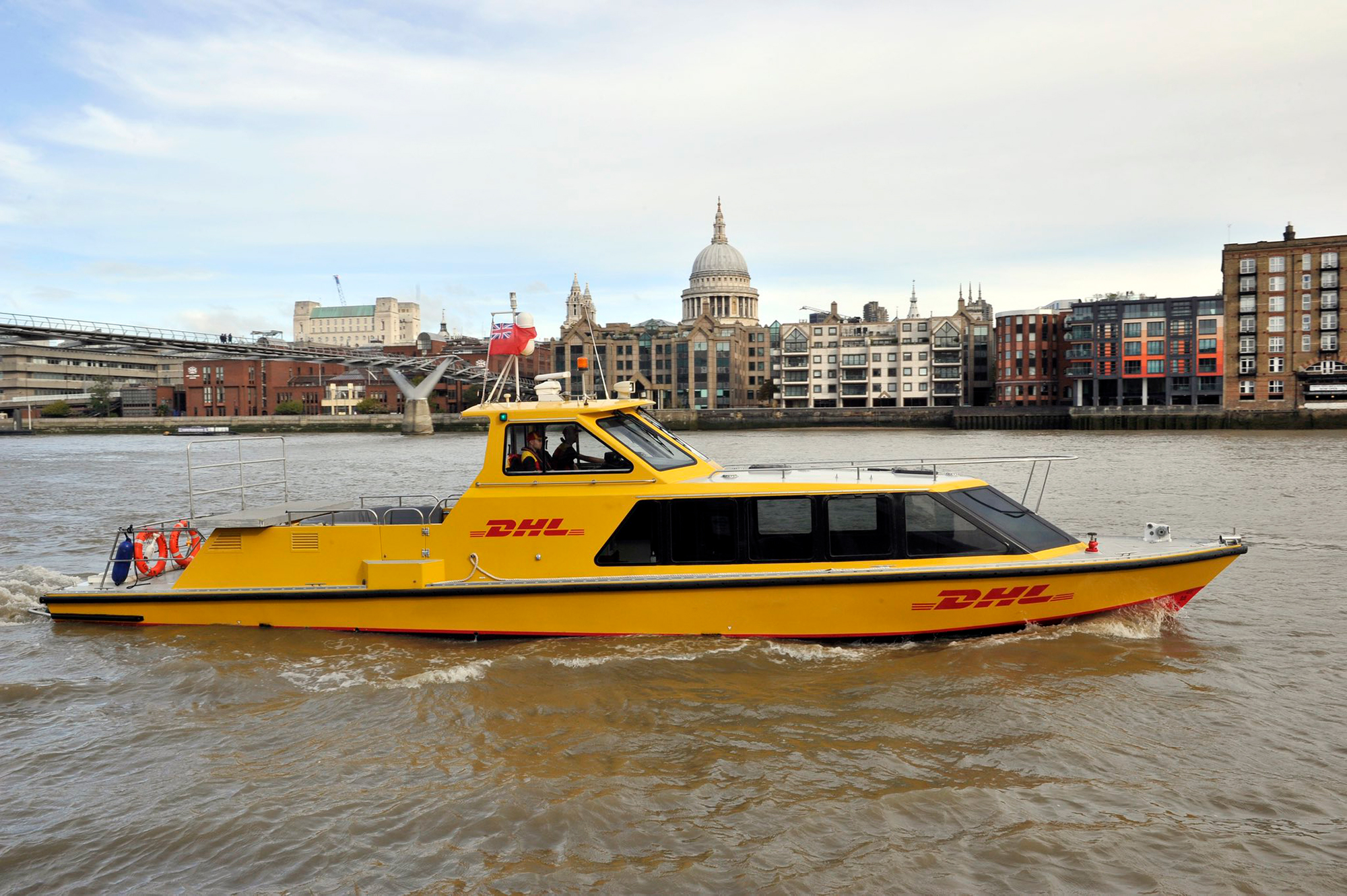28.09.2020
Unlocking economic recovery – by river

 Robin Mortimer, chief executive of the Port of London Authority (PLA), heralds the role a resurgent Thames can play in restoring prosperity, post the COVID pandemic.
Robin Mortimer, chief executive of the Port of London Authority (PLA), heralds the role a resurgent Thames can play in restoring prosperity, post the COVID pandemic.
Bankside Pier, in the shadow of Shakespeare’s Globe Theatre, this morning provides a welcome reason to be positive in these uncertain times.
It’s the terminal for an innovative daily service, launched today by DHL Express, ferrying parcels into the centre of town by boat for ‘final-mile’ delivery by pedal bikes.
It’s a double dose of good news, boosting both the economy and the environment.
Following a DHL model successfully rolled out in Venice, packages will be loaded on to the river at Wandsworth from electric vehicles and sped into town along the Thames, reducing congestion and pollution.
"Ever since Roman times, the river has been fundamental to the city’s global economic success. Over the centuries, use of the river has regularly adapted to changing circumstances.
It’s no different today.
Happily, a raft of other initiatives is set to accelerate the river’s latest resurgence.
The fast-approaching completion of the Thames Tideway Tunnel (aka London’s “super sewer”) will restore water quality in the river to levels not seen since before the Industrial Revolution. Along with its first phase, the Lee Tunnel, already in operation, and Crossrail, the Tideway project has clearly demonstrated the feasibility of using the river for the transportation of construction materials. It’s a template all future infrastructure projects on the river should replicate.
None of this has happened by chance. It’s taken years of planning.
I am particularly proud of the PLA’s work over more than two decades to safeguard piers on the tidal Thames.
Close liaison with central government and the GLA means they are now integral to the long-term London Plan.
Recent PLA investment has re-activated both Peruvian Wharf and Primrose Wharf in Newham, part of a strategy which has already taken more than 200,000 HGVs off the capital’s roads.
Discussion are in hand to repeat this success elsewhere along the river. They include opportunities to establish west London’s first inland container terminal.
Another welcome catalyst will be the City of London Corporation’s relocation eastwards of Smithfield, Billingsgate and New Spitalfields markets.
The planned creation by Forth Ports and DP World of a freeport in the estuary would be a further significant catalyst.
From Barnes and Bankside, all the way to Barking and beyond, the renaissance of the river is real.
Through close collaboration with all our partners, including the newly-established Thames Estuary Growth Board, we are determined to maximise the potential benefits for all.

